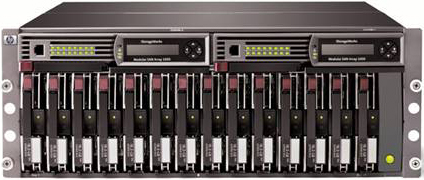
One of the major problem IT depts must deal with is data loss. There are a lot of different technics to prevent a system outage due to data loss is the use of disk arrays.
Redundant Array of Independent Disks (originally redundant array of inexpensive disks) is called the method in which we use multiple HDDs to store data in order to protect our data and provide a fast data recovery time in the worst case scenario.
There are many types of RAID arrays, depending the number of the HDDs and the way the data are stored within:
RAID-0
Often called ‘striping’ as the data is written and distributed across all disks. There is no absolute protection of data because if a disk crash then the whole system collapses. The system requires the existence of two discs.
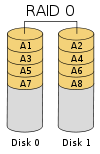
RAID-1
The first level is called ‘mirroring’ and data are written in identical discs. This technique is very useful in case you need data recovery, but the speed of data entry is relatively slow. This system is the most common due to easy and requires two drives.
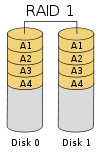
RAID-2
It is the only array that does not use any of the standard techniques (striping, mirroring, and / or parity). The data written to the striping technique while counting the odd bits of error correction codes (Hamming Codes ECC). Due to the complexity and cost of the Raid-2 is not particularly popular.
RAID-3
This type also uses ‘stripping’ mechanism with the difference being that there is a dedicated disk (parity disk) that contains parity data and offers greater reliability.
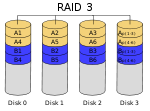
RAID-4
It uses the same technique with Raid-3 with the only difference being is the size of the information distributed to the disks and the access controller to them.
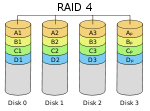
RAID-5
It is one of the most popular Raid arrays due to its low cost compared with the reliability it provides. The technique followed is similar to the Raid-4 except that instead of allocating the parity data on dedicated disk, with the help of the algorithm allocates all member disks in the array.
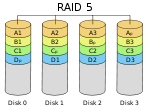
RAID-6
Essentially, the Raid-6 is an extension of the Raid-5. Using a second independent drive for parity data, which makes the system stronger in dealing with errors, which can even respond to multiple, simultaneous loss of records.
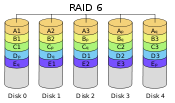
RAID-7
A completely different philosophy introduced by the Raid-7. It uses a microprocessor and an operating system, real-time makes the job of controller asynchronously. The performance is quite high, and costs.
RAID-10
It is a combination of Raid-0 and Raid-1. Requires at least four disks, two for striping and two for mirroring. Provides the same data protection with the Raid-1 but with higher costs.
Despite efforts to address the problems of data loss, no system is perfect and even a Raid array can collapse. So, data backup must be regularly be taken in other media.